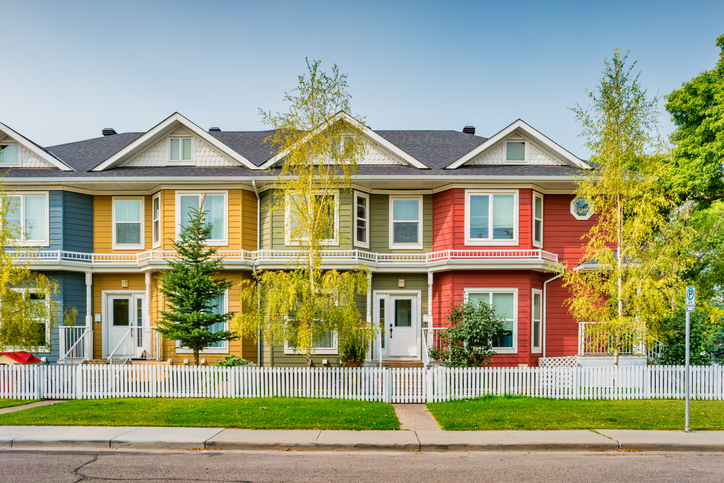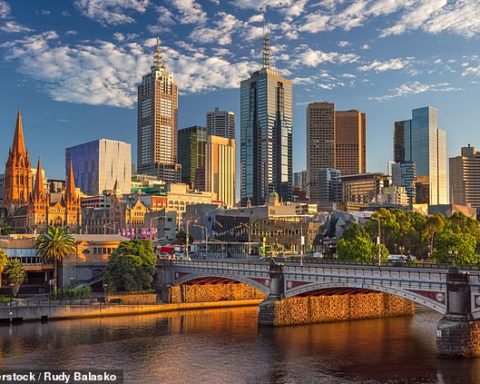Innovative solutions are essential to ensure a sustainable future in a world where climate change and urbanisation are transforming our landscapes. Enter the fascinating realm of floating homes, where estate agents in the UK have a significant role to play. These aquatic housing solutions are more than just a response to environmental challenges; they represent a vision for a greener, more sustainable way of living.
Aquatic Living: A Bold Solution for a Changing World
Picture a home gently bobbing on the water, the soothing sound of waves lulling you to sleep at night. Floating homes are not just a romantic notion but a pragmatic response to two significant challenges: rising sea levels and the need for sustainable urban development.
As climate change continues to drive sea levels higher, coastal cities face unprecedented threats. In the UK, iconic cities like London, Liverpool, and Cardiff are particularly vulnerable. Traditional housing solutions often require costly sea defences, but floating homes offer a unique opportunity to adapt to these changes proactively.
Design and Sustainability
Floating homes are not merely houseboats but architectural marvels designed for comfortable, eco-friendly living. Many are equipped with state-of-the-art green technologies like solar panels, rainwater harvesting systems, and sewage treatment facilities. These innovations reduce their environmental footprint and contribute to a more sustainable way of life.
The emphasis on sustainability extends beyond energy-efficient features. Floating homes often use environmentally friendly materials in their construction. This sustainable approach minimises their impact on aquatic ecosystems, ensuring that residents can enjoy their surroundings without harming the delicate balance of marine life.
Community and Connection
One might imagine that living on the water means isolation, but it’s quite the opposite. Many floating home communities are thriving, close-knit neighbourhoods. Residents often share a deep appreciation for the environment and a commitment to sustainable living. It’s a sense of community that’s both unique and appealing.
Community gardens, communal spaces, and shared activities are standard features of these neighbourhoods. Residents enjoy the camaraderie of their neighbours and actively participate in the preservation of the aquatic environment around them. This strong sense of belonging is a testament to the communal spirit of floating home communities.
The Aquatic Advantage
Property valuation is critical in any housing market, and floating homes offer a unique value proposition. Their sustainability features, coupled with their close-knit communities, can positively influence a property’s worth. As the world embraces greener living, these aquatic homes are gaining traction as desirable, forward-thinking investments.
The increasing demand for eco-friendly and resilient housing options drives interest in floating homes. This surge in demand often translates to higher property valuations. Investors and homeowners recognise these sustainable properties’ long-term value, making them an appealing choice in an ever-evolving real estate market.
Moreover, the locations of floating home communities often offer picturesque waterfront views and easy access to recreational activities like kayaking, fishing, and paddleboarding. These factors further enhance the desirability of floating homes and contribute to their positive impact on property valuations.
Challenges and Regulations
While the allure of floating homes is undeniable, there are challenges to consider. Regulations regarding aquatic housing can be complex and vary by region. Infrastructure for floating homes, including moorings and utilities, must also be carefully planned and maintained. Navigating these challenges requires careful research and compliance with local laws.
For example, mooring regulations can dictate the size and type of floating homes allowed in specific areas. Environmental regulations aim to protect marine ecosystems and water quality. Potential buyers and developers must engage with local authorities and experts who can guide adhering to these regulations while pursuing innovative aquatic housing projects.
The Future Afloat
The concept of floating homes represents more than just a housing solution; it’s a vision for the future. It demonstrates our adaptability to climate change and our commitment to sustainable living. As we move toward a world where water-based living is feasible and desirable, floating homes in the UK are paving the way for a more environmentally conscious and harmonious way of life.
Floating homes are not a fleeting trend but a beacon of hope for a sustainable future. These aquatic housing solutions offer a viable and forward-thinking alternative in the UK, where coastal cities grapple with rising sea levels. Their impact on property valuations, their emphasis on sustainability, and the sense of community they foster make them an intriguing prospect for those looking to embrace a greener, more resilient way of life. As we navigate the challenges of the 21st century, floating homes in the UK remind us that, sometimes, the answers are right beneath our feet—on the water.




